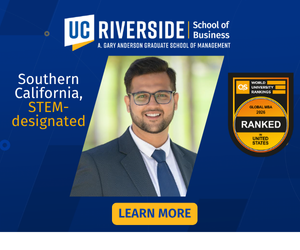|
|

GMAT Club Daily Prep
Thank you for using the timer - this advanced tool can estimate your performance and suggest more practice questions. We have subscribed you to Daily Prep Questions via email.
Customized
for You
Track
Your Progress
Practice
Pays
Not interested in getting valuable practice questions and articles delivered to your email? No problem, unsubscribe here.
Kudos
Bookmarks
Prompt:
CCompany Z started providing free gourmet lunches to its employees. The Company hoped that these office lunches would encourage employees to remain in the building during lunch-hour and motivate employees to work harder throughout the day. A survey found that soon after the lunch program was implemented, the average number of hours worked by most Company Z employees increased dramatically. During this same period, the Company's profits also increased substantially. Thus, it is safe to say that the lunch program was a huge success and that Company Z should make the program permanent."
Discuss how well reasoned you find this argument. Point out flaws in the argument's logic and analyze the argument's underlying assumptions. In addition, evaluate how supporting evidence is used and what evidence might counter the argument's conclusion. You may also discuss what additional evidence could be used to strengthen the argument or what changes would make the argument more logically sound.
Response:
The argument above states that the lunch program implemented at Company Z was a huge success and encourages Company Z to make the program permanent to continue boosting worker productivity and increasing company profits. However, this argument is flawed due to the author's use of ambiguity and overconfident conclusions.
The author displays ambiguity by not providing the definition for a successful lunch program. From this argument, the author is focused on the hours worked and profit increases of Company Z. However, these metrics do not equate to success of the individual lunch program at Company Z. This is a faulty comparison. To strengthen this conclusion, the author needs to obtain lunch program metrics such as number of employees who participated, satisfaction rates for service and food for the program, how often employees returned to the program, and how many hours employees worked after participating in the program. Without these considerations, the author cannot assume the correlation between the free lunch program and worker productivity.
Additionally, the author voices overconfident conclusions by correlating the implementation timeline of the free gourmet lunch program with Company Z's increase of profits timeline. Even though both incidents occurred in the same 6 month time frame, this does not indicate dependencies. Additionally, the argument indicates that the average number of hours worked per employee increased which suggests the lunch program may have increased morale and worker productivity. However, the author fails to consider that there may be external factors contributing to this increase outside of the free lunch program. For example, the employees may have skipped the lunch hour and free lunch program and as a result, the hour lost from lunch is added to the average hours worked.
Overall, this argument is neither sound nor persuasive. To strengthen the argument, the author needs to separate the two events: the free lunch program and the increase in profits and hours worked. From there, the author should further evaluate external factors and success metrics before concluding that the events are positively correlated and that Company Z should make the lunch program permanent.
CCompany Z started providing free gourmet lunches to its employees. The Company hoped that these office lunches would encourage employees to remain in the building during lunch-hour and motivate employees to work harder throughout the day. A survey found that soon after the lunch program was implemented, the average number of hours worked by most Company Z employees increased dramatically. During this same period, the Company's profits also increased substantially. Thus, it is safe to say that the lunch program was a huge success and that Company Z should make the program permanent."
Discuss how well reasoned you find this argument. Point out flaws in the argument's logic and analyze the argument's underlying assumptions. In addition, evaluate how supporting evidence is used and what evidence might counter the argument's conclusion. You may also discuss what additional evidence could be used to strengthen the argument or what changes would make the argument more logically sound.
Response:
The argument above states that the lunch program implemented at Company Z was a huge success and encourages Company Z to make the program permanent to continue boosting worker productivity and increasing company profits. However, this argument is flawed due to the author's use of ambiguity and overconfident conclusions.
The author displays ambiguity by not providing the definition for a successful lunch program. From this argument, the author is focused on the hours worked and profit increases of Company Z. However, these metrics do not equate to success of the individual lunch program at Company Z. This is a faulty comparison. To strengthen this conclusion, the author needs to obtain lunch program metrics such as number of employees who participated, satisfaction rates for service and food for the program, how often employees returned to the program, and how many hours employees worked after participating in the program. Without these considerations, the author cannot assume the correlation between the free lunch program and worker productivity.
Additionally, the author voices overconfident conclusions by correlating the implementation timeline of the free gourmet lunch program with Company Z's increase of profits timeline. Even though both incidents occurred in the same 6 month time frame, this does not indicate dependencies. Additionally, the argument indicates that the average number of hours worked per employee increased which suggests the lunch program may have increased morale and worker productivity. However, the author fails to consider that there may be external factors contributing to this increase outside of the free lunch program. For example, the employees may have skipped the lunch hour and free lunch program and as a result, the hour lost from lunch is added to the average hours worked.
Overall, this argument is neither sound nor persuasive. To strengthen the argument, the author needs to separate the two events: the free lunch program and the increase in profits and hours worked. From there, the author should further evaluate external factors and success metrics before concluding that the events are positively correlated and that Company Z should make the lunch program permanent.
Moderators:
188 posts





